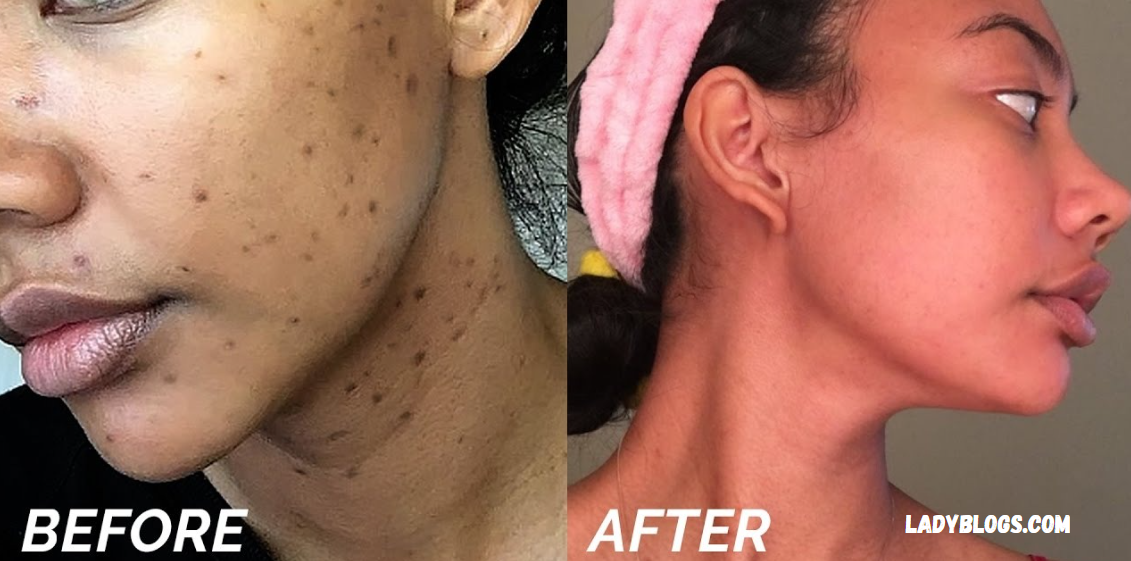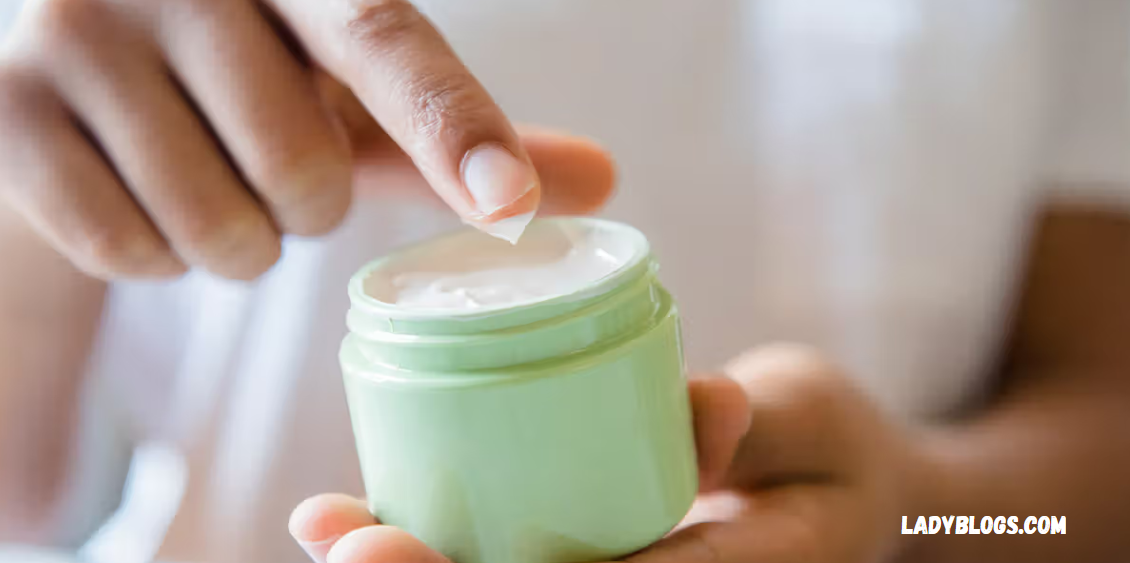Dark spots, also known as hyperpigmentation, are a common skin concern that many people face at some point. These marks can appear due to a variety of factors, including sun exposure, acne scars, hormonal changes, or inflammation. While dark spots are harmless, they can impact your skin’s appearance and cause frustration when trying to achieve a smooth, even complexion. Fortunately, there are effective treatments and skincare routines designed to lighten and fade these spots over time. In this guide, we’ll explore the best strategies and products to help you get rid of dark spots and restore your skin’s natural glow.
What Are the Types of Pigmentation?
Several types of pigmentation can develop on the skin, collectively known as hyperpigmentation, where certain areas of skin produce more melanin than others, leading to darker spots. This can result from a variety of causes, including acne, hormonal changes, sun exposure, injuries like cuts or burns, bug bites, certain medications, surgery, or any form of trauma that triggers inflammation in the skin.
Age spots, also referred to as sunspots, liver spots, or solar lentigines, are among the most common types of pigmentation. According to Dr. Connie Yang, these spots are caused by UV damage and typically appear in sun-exposed areas such as the face, chest, shoulders, and hands. They tend to manifest over time with repeated sun exposure and are more prominent in individuals with years of sun exposure, particularly as they age.
Another common cause of dark spots is post-inflammatory hyperpigmentation (PIH), which occurs after trauma to the skin, such as acne lesions, cuts, or conditions like eczema. Dr. Yang explains that PIH happens when the skin produces excess pigment in response to inflammation or injury.
Sun-induced dark spots also fall under the category of pigmentation. These spots typically appear on the face, arms, and legs, although they can occur anywhere on the body. Even brief sun exposure can trigger the formation of these spots over time.
When developing a skincare routine to address dark spots, it’s crucial to identify the specific type of pigmentation you’re dealing with. Tailoring your approach to target and lighten the discoloration effectively will yield the best results.
Key Ingredients to Treat Dark Spots
When it comes to effectively and safely eliminating dark spots, several proven skincare ingredients can be found in over-the-counter products that help break down stubborn pigmentation and promote a more even complexion. Dr. Connie Yang recommends using targeted active ingredients like vitamin C, retinol, azelaic acid, and niacinamide, along with daily sunscreen. “It’s essential to protect the skin from the sun, or else the pigment will take longer to fade or may even return, despite using these actives,” she explains.
Retinol: A vitamin A derivative, retinol accelerates the skin’s cell turnover rate, helping to reduce the appearance of dark spots. Available in serums, creams, gels, and lotions, it’s best used at night, as it also inhibits tyrosinase, an enzyme involved in melanin production. “Retinol aids in shedding damaged, pigmented skin more rapidly, revealing fresher, evenly toned skin,” says Dr. Yang.
Vitamin C: Known for its antioxidant properties, vitamin C helps inhibit tyrosinase production, while brightening the skin and gradually lightening dark spots. Dr. Yang explains that vitamin C also helps prevent free radical damage, which can contribute to dark spot formation, while simultaneously evening out skin tone and brightening the complexion.
Glycolic Acid: A member of the alpha hydroxy acid (AHA) family, glycolic acid works by physically breaking down the bonds between dead skin cells, allowing darkened cells to be exfoliated away, revealing fresher skin underneath.
Niacinamide: Also known as vitamin B3, niacinamide provides a variety of skin benefits, with a key role in addressing dark spots. It works by inhibiting the transfer of pigment from melanocytes (pigment-producing cells) to keratinocytes (skin cells), helping to lighten dark spots and even out skin tone.
Azelaic Acid: Commonly recommended for conditions like rosacea and acne, azelaic acid is also effective in treating dark spots. It blocks melanin production while offering anti-inflammatory and exfoliating effects. “Azelaic acid is excellent for dark spots because it inhibits the enzyme responsible for pigment production,” Dr. Yang notes.
Incorporating these ingredients into your skincare routine, along with consistent sun protection, can help you gradually fade dark spots and achieve a brighter, more even complexion.
What Causes Dark Spots?
Dark spots, or hyperpigmentation, occur when certain areas of the skin produce excess melanin, the pigment responsible for skin color. Several factors can trigger this overproduction of melanin, leading to darkened patches on the skin. Here are the most common causes:
- Sun Exposure: One of the primary causes of dark spots is prolonged exposure to ultraviolet (UV) rays from the sun. UV rays trigger an increase in melanin production as the skin attempts to protect itself from damage. Over time, this leads to the formation of sunspots, also known as age spots or liver spots, typically appearing on areas of the skin frequently exposed to the sun, such as the face, hands, and shoulders.
- Acne Scarring: Post-inflammatory hyperpigmentation (PIH) is a common occurrence after acne. When a pimple or breakout heals, the skin may produce excess melanin in response to the inflammation or injury, leading to dark spots or scars that can linger long after the acne has healed.
- Hormonal Changes: Hormonal fluctuations, especially during pregnancy or while taking birth control, can lead to a condition called melasma. This results in brown or grayish patches, commonly on the face, due to an overproduction of melanin triggered by hormones like estrogen and progesterone.
- Skin Injury or Inflammation: Any injury or inflammation, including cuts, burns, rashes, or even bug bites, can cause dark spots to form. When the skin is damaged, the healing process often results in excess melanin being produced in the affected area.
- Medications: Certain medications, such as oral contraceptives, hormone replacement therapy, or chemotherapy drugs, can increase the skin’s sensitivity to sunlight and promote the formation of dark spots.
- Aging: As we age, the skin’s ability to regenerate and repair itself slows down. Sun exposure and accumulated damage over the years can lead to the appearance of dark spots, particularly in areas that have seen the most sun exposure.
- Genetics: Some individuals may be genetically predisposed to developing hyperpigmentation, especially in response to sun exposure or skin trauma.
Understanding the root cause of dark spots is crucial for developing an effective treatment plan, as the approach for addressing sun-induced spots may differ from that used for post-acne discoloration or melasma.
Visit Now: Best Ways for How to Get Smooth Skin in 2025
Are Certain Types of Dark Spots Easier to Get Rid of?
When it comes to effectively treating dark spots, it’s essential to understand that achieving visible results will require time, patience, and consistent effort. Some types of dark spots, such as sunspots and age spots, may respond more readily to certain brightening ingredients than others. According to Dr. Connie Yang, “Dark spots caused by minor injuries, like pimples, are generally easier to fade than sunspots or melasma because they are typically more superficial.” That’s why it’s essential to develop and stick to a targeted skincare routine that not only addresses the specific type of dark spots you’re dealing with but also helps prevent new ones from forming.
How to Effectively Get Rid of Dark Spots
Effectively getting rid of dark spots requires a combination of targeted treatments, consistency, and sun protection. Whether your dark spots are caused by acne, sun exposure, or other factors, there are proven steps and ingredients that can help lighten pigmentation over time. Here’s how to approach dark spot treatment effectively:
1. Target the Right Ingredients
Certain skincare ingredients are known for their ability to break down excess pigment and brighten the skin. Incorporate these into your routine for the best results:
- Vitamin C: This powerful antioxidant brightens skin, inhibits melanin production, and helps even out skin tone. It also prevents further sun damage that could worsen dark spots.
- Retinol: A vitamin A derivative, retinol boosts cell turnover, helping to shed pigmented skin more quickly and revealing fresh, even-toned skin underneath.
- Niacinamide: This form of vitamin B3 inhibits the transfer of pigment to skin cells, helping to lighten dark spots and even out skin tone.
- Azelaic Acid: Known for its anti-inflammatory properties, azelaic acid reduces melanin production and gently exfoliates the skin, making it a great option for sensitive skin types.
- Glycolic Acid: An alpha hydroxy acid (AHA), glycolic acid exfoliates the skin’s surface, removing dead skin cells and helping to fade dark spots by speeding up the turnover of skin cells.
2. Consistency Is Key
The process of fading dark spots takes time, often several weeks to months, depending on the severity and cause of the spots. Be consistent with your skincare routine, applying the recommended active ingredients daily or as directed. Avoid expecting instant results, as dark spots will gradually fade with consistent care.
3. Use Sunscreen Daily
Sun protection is crucial when trying to lighten dark spots. UV exposure can worsen pigmentation and make it harder for spots to fade. Use a broad-spectrum sunscreen with an SPF of at least 30 every day, even on cloudy days or indoors, to prevent new spots from forming and to protect the skin while treatments work.
4. Gentle Exfoliation
Regular exfoliation can help fade dark spots by removing the outer layers of pigmented skin. Opt for chemical exfoliants like AHAs (e.g., glycolic acid) or BHAs (e.g., salicylic acid) rather than physical scrubs, as they can be gentler on the skin and provide more even results.
5. Avoid Picking or Scratching Skin
To prevent dark spots from forming due to acne or skin injury, avoid picking at or scratching your skin. Doing so can cause inflammation, leading to post-inflammatory hyperpigmentation (PIH), which results in more dark spots.
6. Consider Professional Treatments
If over-the-counter products aren’t giving you the results you want, professional treatments such as chemical peels, laser therapy, or microneedling can help accelerate the fading of dark spots. These treatments are typically done by a dermatologist and can offer more intensive results, especially for stubborn spots like melasma or deep sun damage.
7. Be Patient
Finally, be patient. While dark spots can be treated and lightened, the process takes time. Stick to your routine, avoid sun exposure, and allow several weeks or months for noticeable improvements. Over-treating or changing products too frequently can irritate the skin and delay results.
By using the right ingredients, being consistent with your routine, and protecting your skin from the sun, you can effectively reduce the appearance of dark spots and achieve a more even complexion over time.
Frequently Asked Questions
How long does it take to see results in fading dark spots?
The time it takes to see noticeable results can vary depending on the type and severity of the dark spots. On average, it can take anywhere from 4 to 12 weeks for dark spots to visibly fade with consistent treatment. Factors such as the cause of the spots, the products used, and how regularly you apply them can influence the time frame.
Can dark spots go away on their own?
In some cases, dark spots may fade over time without treatment, mainly if they’re caused by minor skin injuries or inflammation. However, most dark spots, particularly those caused by sun exposure or acne, will require active treatment to fade effectively. Using brightening ingredients and protecting your skin from further sun damage is key to speeding up the process.
How can I prevent dark spots from coming back?
To prevent dark spots from reappearing, it’s essential to incorporate a consistent skincare routine that targets pigmentation and protects against further sun exposure. Always apply sunscreen with at least SPF 30 every day, avoid picking or squeezing pimples, and use brightening ingredients like vitamin C and niacinamide to help prevent the formation of new spots.
Can I treat dark spots if I have sensitive skin?
Yes, but it’s essential to use gentle, non-irritating ingredients. Opt for products with lower concentrations of active ingredients like glycolic acid or retinol, or consider alternatives such as azelaic acid and niacinamide, which are typically gentler on sensitive skin. Always do a patch test before introducing new products to your routine to avoid irritation.
Is it safe to use multiple active ingredients at once?
While many brightening ingredients work well together, it’s important to avoid overwhelming your skin. Some actives, like retinol and glycolic acid, can cause irritation when used together, especially for sensitive skin. It’s often best to alternate products or use them at different times of day—such as applying vitamin C in the morning and retinol at night—to reduce the risk of irritation.
Can professional treatments speed up the process of fading dark spots?
Yes, professional treatments like chemical peels, microdermabrasion, or laser therapy can help accelerate the fading of dark spots. These treatments are typically more intense and can be done by a dermatologist to target deeper or more stubborn pigmentation. However, they often come with a higher cost and may require some downtime for recovery.
Will sunscreen really help with dark spots?
Yes, sunscreen is essential in preventing dark spots from worsening or reappearing. UV rays from the sun can trigger melanin production, which causes dark spots to become darker or more persistent. Using a broad-spectrum sunscreen daily, even on cloudy days or indoors, helps protect your skin and allows treatments to work more effectively.
Can dark spots be eliminated entirely?
While most dark spots can be significantly lightened with the right treatments, complete elimination may not always be possible, especially for deep or long-established spots like those from melasma or severe sun damage. However, with consistent treatment, you can achieve a more even skin tone and reduce the appearance of dark spots over time.
Conclusion
Getting rid of dark spots requires a combination of patience, consistency, and the right skincare approach. By understanding the cause of your dark spots—whether from sun exposure, acne, or hormonal changes—you can select the most effective ingredients to target and lighten pigmentation. Key ingredients like vitamin C, retinol, niacinamide, azelaic acid, and glycolic acid can work wonders in fading dark spots when used consistently.
However, it’s important to remember that dark spots take time to fade, and results won’t be immediate. Protecting your skin from further damage by wearing sunscreen daily is essential for preventing new spots from forming and allowing treatments to work more effectively. With dedication, the right products, and a commitment to protecting your skin, you can achieve a more even and radiant complexion. Keep in mind that if over-the-counter treatments aren’t giving you the desired results, professional options like chemical peels or laser therapy are available and may offer more intensive solutions.




